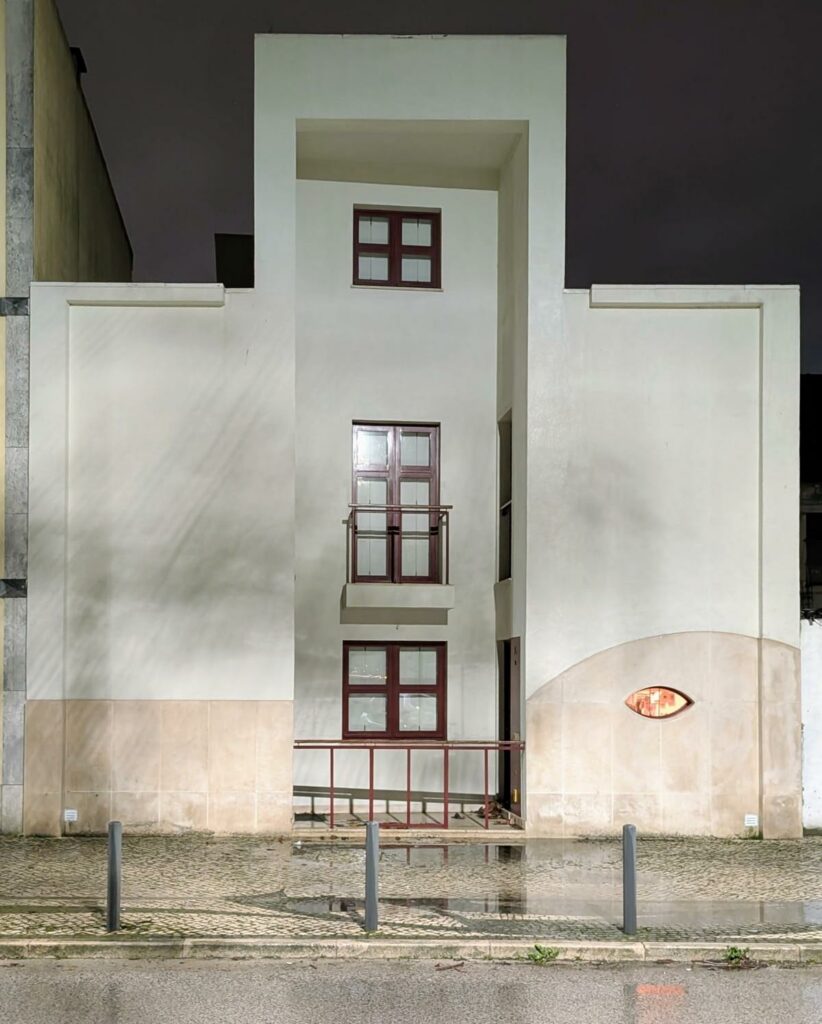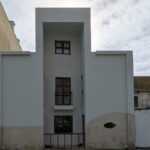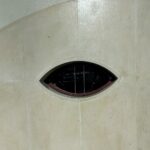A House That Stands Apart
By the late 1980s, the Barreiro region was caught between two identities—the old industrial town and a quieter residential alternative to Lisbon. It was a place where people came to escape the city’s intensity, yet the scars of industry remained, shaping both the landscape and its communities.
It was here that Joaquim Matias, a former deputy in the Portuguese Parliament, decided to build his home. He had met Alcino Soutinho through mutual friends, and he wanted a house that reflected his personality—private, structured, but deeply thoughtful.
Soutinho gave him exactly that.
A House Against the Chaos
The neighborhood was unstructured—a mix of small homes, informal settlements, and scattered industrial remnants. Many houses opened directly onto the street, exposing their interiors to passersby.
Soutinho refused that approach.
• The house would be inward-facing, protecting itself from its surroundings.
• It would be fortified, not in a brutalist sense, but in a way that created its own atmosphere, detached from the city’s noise.
• High walls, controlled openings, and careful spatial hierarchy would make the house feel like a retreat rather than an exposure.
It was a radical departure from what surrounded it.
Geometry as a Statement
Soutinho always played with pure geometric forms—and here, he pushed them even further.
• The house took shape as a U-inverted structure, partially enclosing an outdoor space that served as a semi-public courtyard.
• The main entrance was set back, creating a transition between the outside world and the home’s introspective universe.
• Windows did not simply “exist”—they were placed with intention, shaped by the need for privacy and control over light.
And then, there was the oculus.
In the kitchen, Soutinho placed a single circular window, an eye into the world outside—a rare moment of outward connection. It wasn’t a mistake. It was a gesture. A way of saying: Even in a private space, we need glimpses of the outside world.
A House That People Didn’t Understand
When the house was completed, it confused the neighborhood.
• It was different.
• It did not reveal itself easily.
• It was not immediately “welcoming” in the traditional sense.
People whispered about it. They called it a bunker. Some even questioned why a politician would want to live in something so closed-off from the world.
But that was the whole point.
Joaquim Matias wanted a house that belonged to him, not to the city around him. He understood that sometimes, great architecture is not about fitting in—it’s about standing apart.
And in that way, this house was perfect.
📖 This story is based on research from the Master’s Dissertation in Architecture and Urbanism:
“As Casas de Alcino Soutinho: Estudo das Habitações Unifamiliares entre 1963 a 2003” by Ana Rita Moreira



